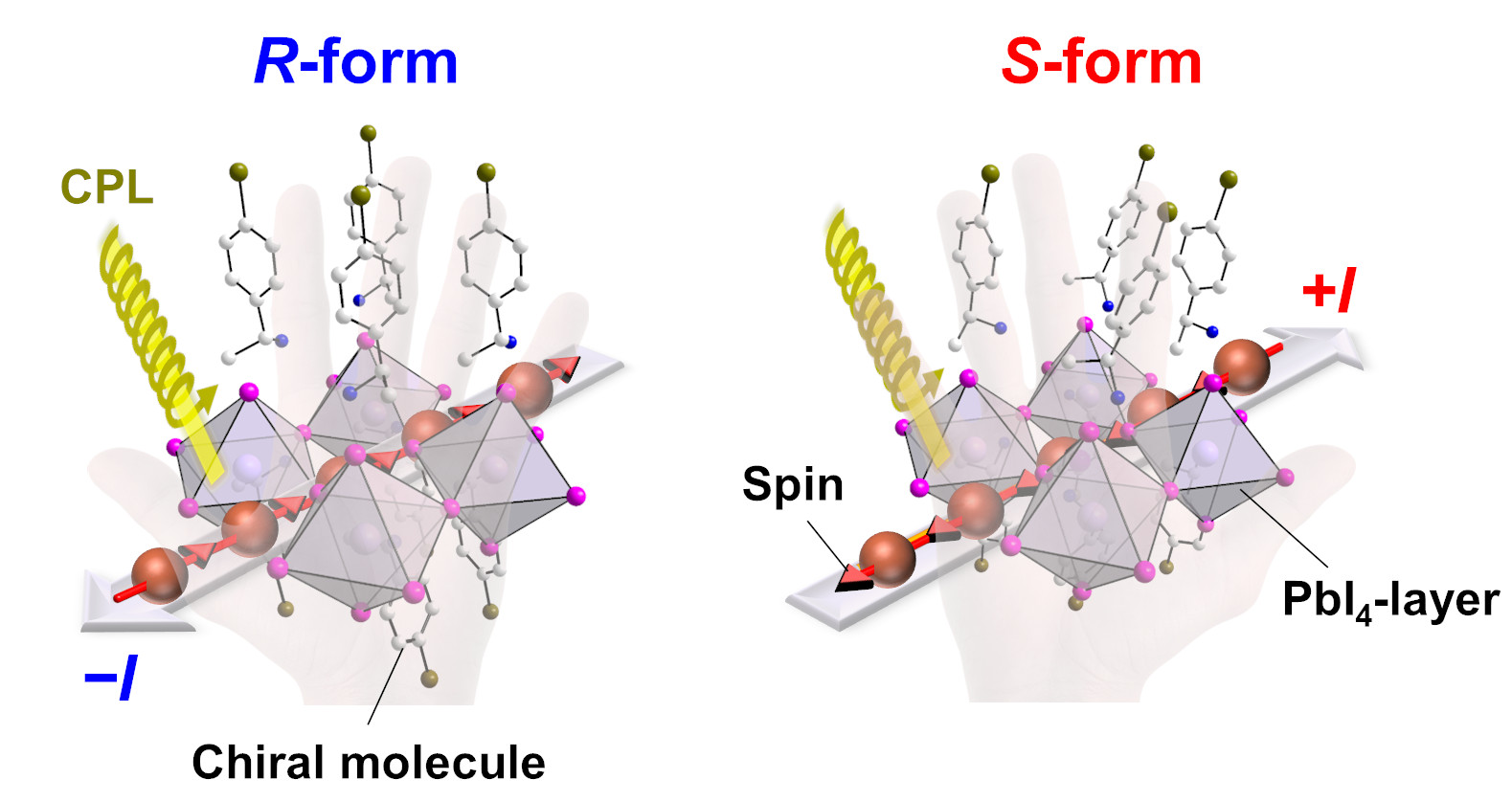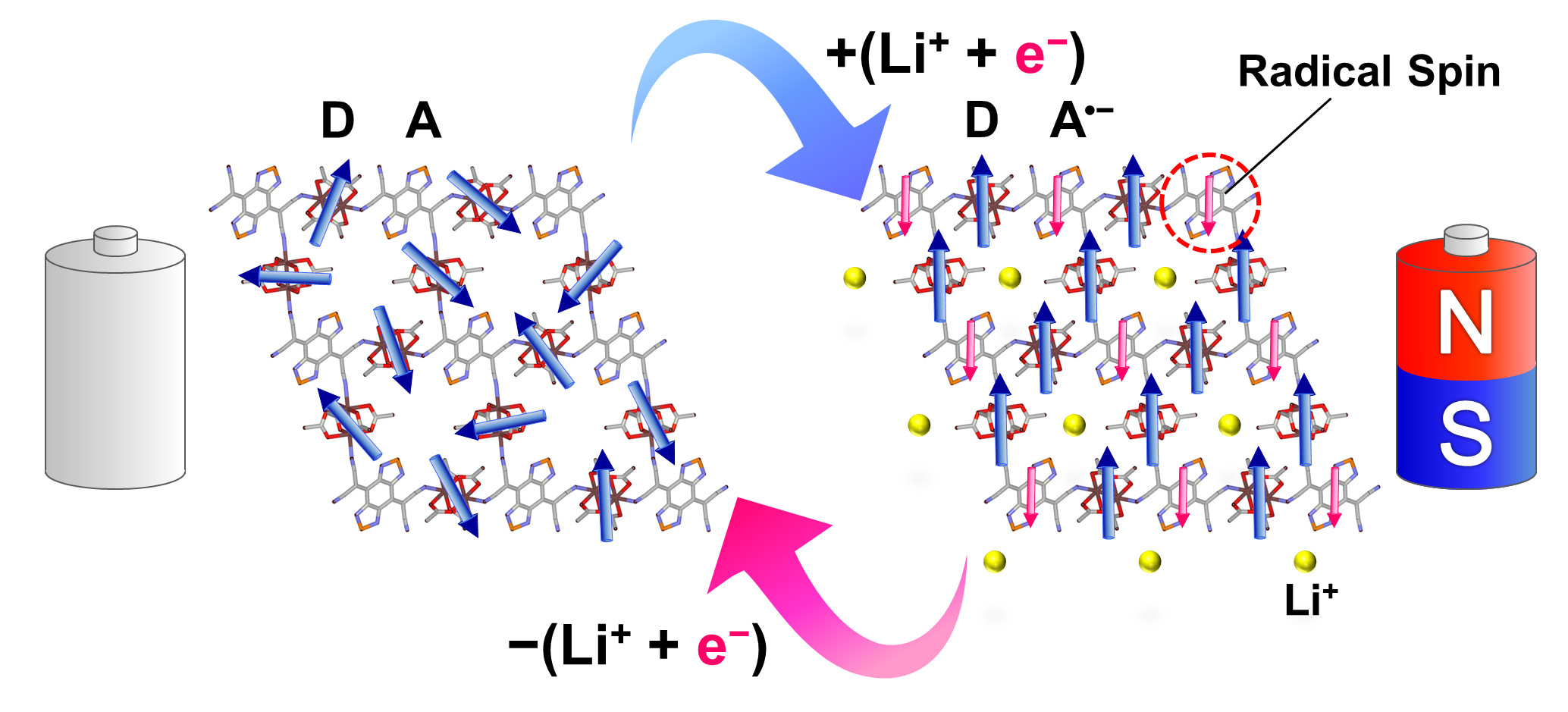RESEARCH
As is well known, matter is composed of a large number of atoms. Atoms themselves consist of nuclei and electrons, but in many cases it is the electrons that play the central role in materials. For example, in chemical reactions and chemical bonding, valence electrons are crucial, and various functional properties essential to our daily lives—such as electrical conduction, light emission, and magnetism—arise from the behavior of electrons. Focusing on these electrons, we are working to explore and develop new functional properties of materials.Specifically, we are interested in linking multiple functional properties—such as electrical conductivity, optical properties, and magnetism—through the mediation of electrons in materials, and in realizing cooperative phenomena arising from the interplay of light, charge, and spin (for example, photocurrent, magnetotransport, and magneto-optical effects). In our actual research, we focus on solid-state materials as the platform where such properties emerge, and we pursue a “self-sufficient” style in which we carry out the entire process ourselves, from material synthesis to property evaluation. In recent years, we have been particularly interested in systems known as organic–inorganic hybrid compounds, where we aim to develop novel properties that are difficult to achieve in purely organic or purely inorganic systems. Moreover, since electrons—the key players in our research—are quantum mechanical particles, we actively incorporate knowledge and techniques not only from chemistry but also from physics, approaching materials from a multifaceted perspective.
Examples of research we have undertaken so far include the exploration of unusual photovoltaic effects in chiral semiconductors, the control of spin states via ion intercalation in metal–organic frameworks (MOFs), and the investigation of magnetoelectric coupling phenomena (magnetoelectric effects) in multiferroics. More recently, we have focused on chirality—the right- or left-handedness of matter—as a key element linking light, charge, and spin. We are working to explore electronic properties that emerge through interactions between chirality and external physical fields such as light, electric current, and magnetic fields. In the future, we hope that insights gained from these studies of chiral electronic properties will provide clues toward addressing one of the great mysteries of natural science: the origin of homochirality, namely, the fact that living systems are composed exclusively of molecules with a single handedness.
Electric Control of Chiral Electronic States Induced by the Proximity Effect of Chiral Molecules
Chirality—corresponding to the distinction between “right-handed” and “left-handed”—is a fundamental concept underlying a wide range of phenomena in chemistry, physics, and biology. Traditionally, when imparting chirality to an achiral material, chiral functional groups or organic ligands have been introduced into target molecules or metals through chemical bonding. In recent years, however, several reports have shown that inserting chiral molecules into layered van der Waals materials can induce chiral-origin physical properties, highlighting the growing interest in chirality control without relying on chemical bonds. In this study, we fabricated an electrically conductive interface by applying an electric field in an electric double-layer transistor incorporating an ionic liquid composed of chiral molecules (a chiral ionic liquid), thereby driving the adsorption of the chiral molecules onto the surface of the semiconductor MoS₂. At this conductive interface formed on an achiral semiconductor, we investigated chirality-dependent electronic transport phenomena—namely, chirality-induced spin selectivity (CISS) and the magnetic chiral effect—and confirmed that chiral electronic states were indeed induced [1]. When chirality is introduced via chemical bonding, tuning the chirality becomes difficult once the material has been synthesized. In contrast, our method enables reversible, electrically controlled adsorption and desorption of chiral molecules. This achievement represents an important step toward establishing a new paradigm of electrically controlled chirality. Building on this discovery may open the way to a new technological field—“chiral iontronics”—that integrates the motion of chiral molecular ions with electronic charge transport, with promising applications in spintronics, optoelectronics, asymmetric catalysis, and other areas.
[1] Sci. Adv. 11, eadx2281 (2025)
Cooperative Photo–Charge–Spin Phenomena in Chiral Organic–Inorganic Hybrid Compounds
In recent years, a class of materials known as organic–inorganic hybrid perovskites has attracted worldwide attention as outstanding candidates for solar cell applications. These materials not only exhibit optoelectronic properties comparable to those of silicon semiconductors, but also possess organic-like features—such as the ability to form thin films through solution processing—that distinguish them from purely inorganic materials. Owing to these characteristics, they are regarded as promising next-generation photoactive materials. Typically, generating a photovoltaic response with such materials requires the formation of interfaces with different substances. However, our group has been working on developing methods to produce photovoltaic effects without the need for interfaces, relying instead on a single material. Specifically, we focused on the fact that creating asymmetric structures by joining different materials is essential for conventional photovoltaic generation, and we therefore turned our attention to designing low-symmetry organic–inorganic hybrid perovskite semiconductors lacking inversion centers, i.e., systems with broken spatial inversion symmetry. So far, we have succeeded in introducing chirality into the organic molecular component of hybrid perovskite semiconductors, thereby realizing systems without inversion symmetry. In these systems, we observed spontaneous photocurrent generation without any external bias—phenomena such as the bulk photovoltaic effect and the circular photogalvanic effect [2,3,5,6]. In addition, by incorporating magnetic elements into the inorganic framework, we have created chiral ferromagnets [1,4], in which we discovered nonreciprocal directional dichroism (an optical magnetoelectric effect), manifested as a difference in brightness when the material is viewed from opposite sides [4]. Through these studies, we have uncovered a variety of novel phenomena in organic–inorganic hybrid compounds, where light, charge, and spin are intricately coupled. Such phenomena hold great promise for future applications—for instance, memory devices in which magnetization reversal can be controlled by light—contributing to the emerging field of optospintronics. Further development in this research direction is highly anticipated.
[1] Phys. Rev. Mater. 8, 024409 (2024)
[2] Chem. Mater. 36, 3563 (2024)
[3] Chem. Mater. 34, 4428 (2022)
[4] Angew. Chem. Int. Ed. 60, 14350 (2021)
[5] Adv. Mater. 33, 2008611 (2021)
[6] J. Am. Chem. Soc. 141, 14520 (2019)
Control of Spin States and Electronic Phases through Ion Transport
Electrical control of magnetism has long been a topic of broad interest due to its high compatibility with widely used electronics technologies in everyday life. In this research, we pursued a novel approach to achieving electrical control of magnetism by utilizing the lithium-ion battery (LIB) system, a representative energy storage device, as a method for high-density electron doping in bulk materials. Specifically, in metal–organic frameworks (MOFs)—porous molecular compounds—we succeeded in reversibly switching magnetism (the ON/OFF control of magnetic states) in synchronization with the charging and discharging of the LIB by controlling the generation and annihilation of radical spins associated with redox reactions [1–3]. A notable feature of this approach is that the induced magnetic states are in electrochemical equilibrium; once established, the magnetism is maintained without continuous power supply. This type of magnetism control via ion transport coupled with redox reactions has recently attracted attention under the term “magneto-ionic control”, and it is expected to lead to the development of novel devices—so-called magneto-ionic devices—based on the interplay between spins and ions. In addition, we have also investigated electronic-phase control, in which ion transport is used to accumulate organic cations at the interface with inorganic materials, forming an ion–electron electric double layer. Through electron doping mediated by this layer, we can transform insulating states into metallic or superconducting states [4,5].
[1] Adv. Funct. Mater. 27, 1604990 (2017)
[2] Chem. Mater. 29, 10053 (2017)
[3] Angew. Chem. Int. Ed. 55, 5238 (2016)
[4] Adv. Funct. Mater. 25, 3043 (2015)
[5] Appl. Phys. Lett. 101, 042603 (2012)
Development of Gigantic Magnetoelectric Effects in Multiferroic Materials
In general, correlations between electricity and magnetism are well known through classical electromagnetism, such as Ampère–Maxwell’s law and Faraday’s law. However, in solids where atoms are arranged discontinuously, unlike in vacuum, unusual magnetoelectric phenomena can arise that do not require time-varying electric or magnetic flux densities. Among such magnetoelectric correlations, phenomena involving the coupling between magnetism and dielectric polarization were predicted by Pierre Curie and later experimentally observed as the magnetoelectric effect. Nevertheless, the response was extremely weak, and until the early 2000s, it attracted little attention. In contrast, we focused on a new class of materials, termed multiferroics, in which ferroelectric and spin orders coexist within a single material, aiming to induce giant magnetoelectric effects in these systems [1–5]. Specifically, we paid attention to the fact that the ferroelectric order breaks spatial inversion symmetry with respect to the charge distribution (i.e., it lacks an inversion center). Guided by this principle, we explored magnetic materials exhibiting helical magnetic structures that also break spatial inversion symmetry. As a result, we discovered novel multiferroics in which helical magnetic order coexists with ferroelectricity, such as MnWO4 [5] and Ba2Mg2Fe12O22 [3]. In these multiferroic materials, the vector spin chirality, a parameter describing the spin arrangement, generates a strong coupling between ferroelectric and spin orders. Through this coupling, we successfully realized various novel and giant magnetoelectric effects, including magnetic-field-induced electric polarization flop (90° rotation) [5], electric polarization reversal (180° rotation) [3], control of ferroelectric single-domain states [2,4], and magnetoelectric memory effects [1].
[1] Phys. Rev. Lett. 102, 147201 (2009)
[2] Phys. Rev. Lett. 101, 207205 (2008)
[3] Appl. Phys. Exp. 1, 031301 (2008)
[4] Phys. Rev. Lett. 99, 227206 (2007)
[5] Phys. Rev. Lett. 97, 097203 (2006)